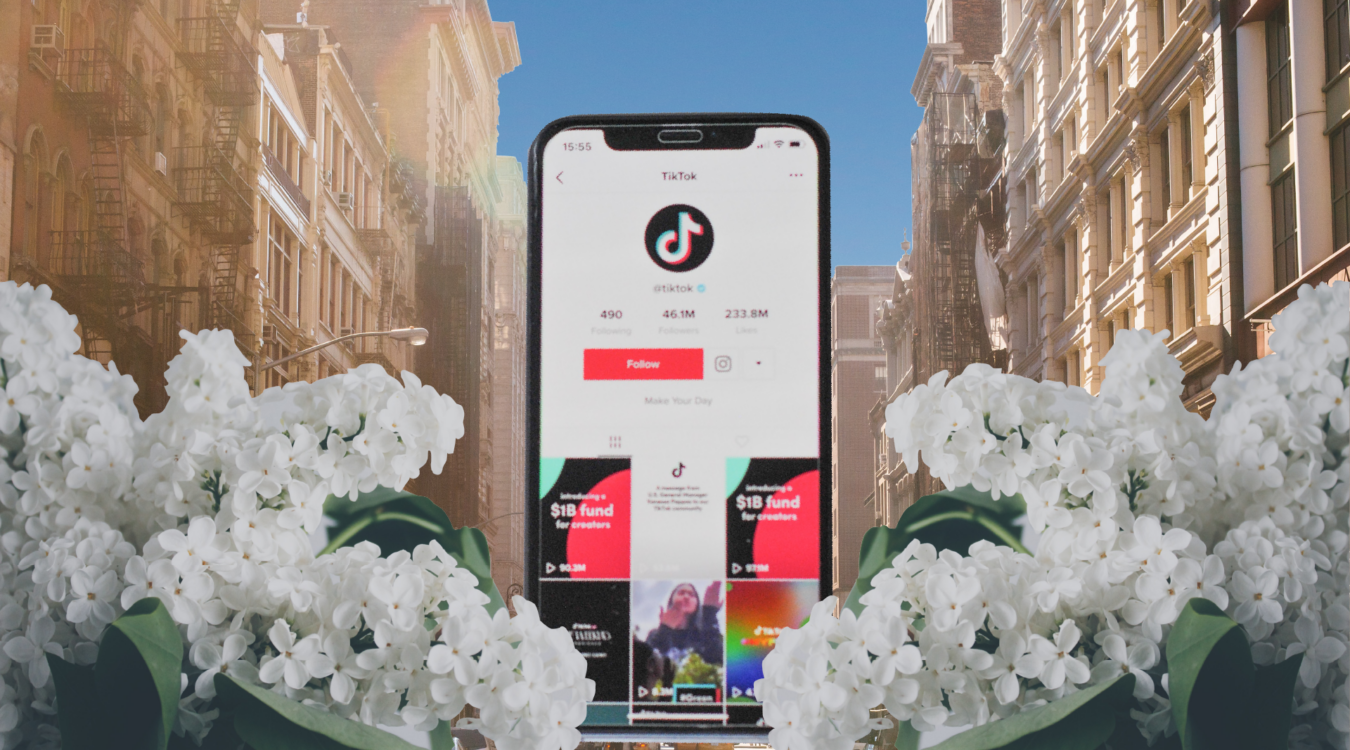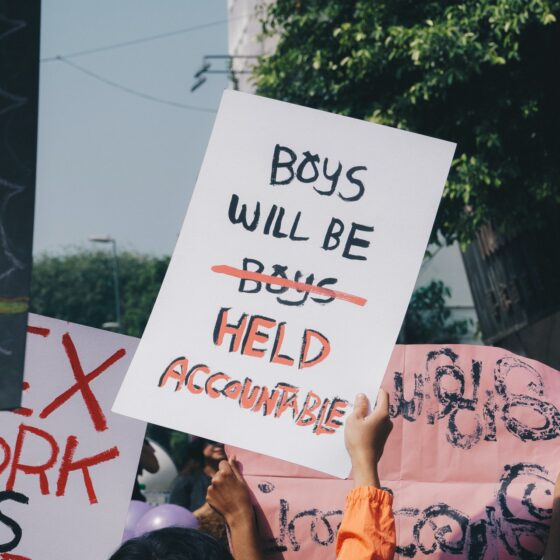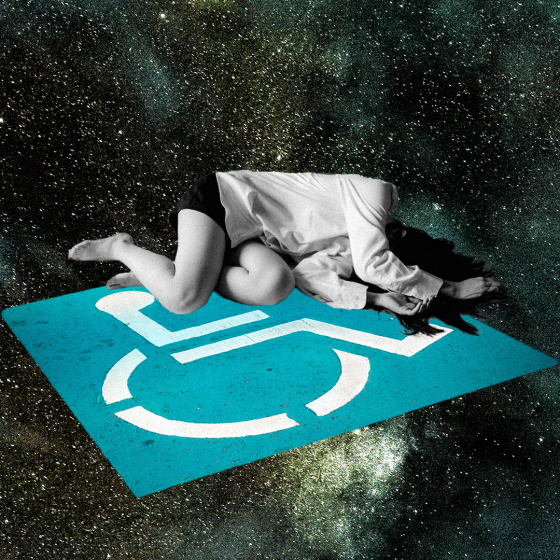Content warning: This article talks openly about #Metoo, consent, sexual harassment and assault.
Drawing attention through dancing, comedy, and an iconic collaboration between Jacob Sartorius and Dr. Anthony Fauci, TikTok has become a part of a billion people’s lives. From influencing the United States’ 2020 Presidential election to solving a murder case, there isn’t any aspect of life that remains untouched by the app; and the #MeToo movement is no exception.
Though TikTok can positively contribute to the conversation around sexual assault, the app’s unique culture, trends, and comment sections have presented many harms to survivors.
Today, we are discussing how TikTok promotes a negative environment for survivors and how survivors can stay mentally and emotionally healthy while using the app.
STAN CULTURE
TikTok was created in 2016 as the rebranded version of the app, Musical.ly. As Musical.ly’s target market was 9-12 year olds, TikTok’s original audience was similar. Despite TikTok now being used by all ages–from 72-year-old cooking teacher Lynja (@cookingwithlynja) to 13-year-old fidget toy enthusiast Ali (@alisonsfidgets)–younger people still make up a large portion of users and contribute greatly to the app’s culture. According to the Omnicore Agency, data-driven marketing experts, 32.5% users are between the ages of 10 and 19.
As young users are more likely to be participants in ‘stan culture’, which is the admiration of a celebrity that is unconditional, the stanning of TikTok stars has become the norm.
After sexual assault allegations against large stars such as Sienna Mae Gomez, Yasir Munagni, and Avaneesh Kanala, the trade-off between believing survivors and undyingly supporting your role model became crystal clear. Fan bases took it upon themselves to ‘redeem’ the aforementioned celebrities through comments and videos at the cost of fostering a supportive community for survivors.
TIKTOK TRENDS
TikTok trends are a fundamental part of the app’s offerings. Though social media trends in general are not new, TikTok trends are distinctive because anyone can participate in them by using a sound or following a certain video format.
However, these trends have promoted sexual assault in various ways.
For example, a popular TikTok sound currently circulating the app asks users, “If you had 24 hours with me and I couldn’t say no, what would we do?”
Though the original video has been taken down, the sound still exists (meaning that users can still create videos to it) and the videos that ‘stitched’ the original (videos using scenes from the original) are still posted.
Clearly romanticizing sexual assault on a platform made for children, this trend is just one key example of the app promoting sexual assault. Not only that, but when survivors have spoken out about this issue, they are silenced via shadowbans or their videos getting taken down entirely. This is unsurprising, as TikTok censorship has empirically impacted social justice related issues and creators. For example, when Black creators amplified the Black Lives Matter movement on TikTok, their content was taken down. The app has even admitted to censoring LGBTQ+ related content in 2020 as well.
COMMENT SECTIONS
Furthermore, Kristin Merrilees explains how “comments are a part of many different social media platforms… But on TikTok, whether it’s due to the anonymity or spontaneity of the platform — or something else altogether— comment sections are taken to a whole new level.”
Though comment sections can be a source for empowerment and humor, TikTok’s cultural endorsement of ‘anonymity or spontaneity’ is a catalyst for those who disbelieve survivors to be more vocal.
In one instance last summer, survivors created a trend where they used paint to signify where their abusers touched them. An empowering way to share their story, people’s responses to this trend were overwhelming–with videos gaining millions of views and a mixed bag of positive and negative comments. When @kaylaherrera66 posted a video using the trend on October 31, 2020, some users left comments such as “hey… I’m proud that u were able to do something like this… extremely proud of u be strong queen.”
However, other users commented things such as, “Yeah ikr I also touched my own hair in the bath…”
Despite the challenges TikTok may present to survivors, there are still ways to enjoy the positive aspects of the app.
How to Enjoy TikTok in a Positive Manner:
LEARN TO BE IN CONTROL OF YOUR FEED
The TikTok ‘For You’ Page, a cultivated feed of videos from creators you do and don’t follow, is based on content you interact with. Thus, it’s possible to influence what kinds of videos the app shows you. Whenever you see a video that you enjoy, be sure to like the video, save it to your favorites, follow the creator, comment, or share. If you stumble across a triggering video, use the ‘Not Interested’ button, which can be found on the lowest row of the share panel. If you find that your ‘For You’ page hasn’t changed much, there are still solutions! You can opt for watching videos that you have favorited (like a feed you’ve pre-made for yourself) or scroll through your Following feed.
ESTABLISH A SELF CARE TOOL KIT
When you’re feeling overwhelmed or triggered by the content you consume, try to get off the app. Though it can be hard, practice leaving the app and turning to a pre-made self care tool kit–a list or tangible kit of things and people you can go to when you need support. For example, if Rocky Road ice cream, origami, and a good documentary calm you down, keep a stash of ice cream in the back of your fridge and store a box with origami paper and a list of documentaries you’ve been wanting to watch. Then, whenever you are feeling triggered, you can get out your ice cream, origami paper, and movie list to detox from the app. Alternatively, you can create a list of comforting people and things on your phone’s notes app. Some things to write down include: your best friends and their phone numbers, a link to a calming Spotify playlist, or fun activities you enjoy.
DON’T ISOLATE YOURSELF
People’s disbelief in survivors and negative reactions to their stories can be easy to internalize. So, if you find yourself seeing negative content and feeling as though it is being directed at you, don’t be afraid to reach out to someone instead of isolating yourself. There are survivor communities online (such as the Restless Network), wellness professionals, and loved ones in your life that you can talk to when you’re in need of comfort and empowerment.









